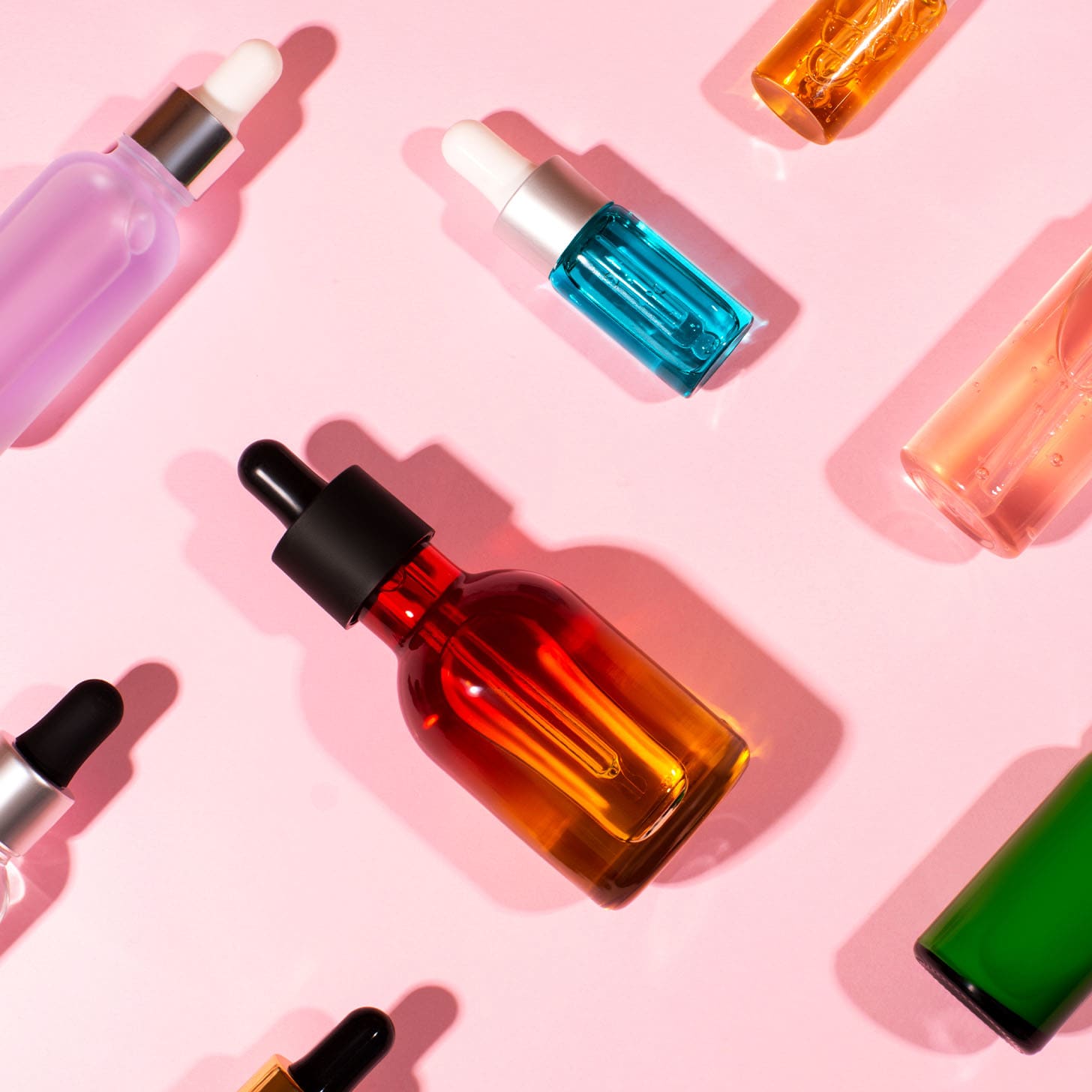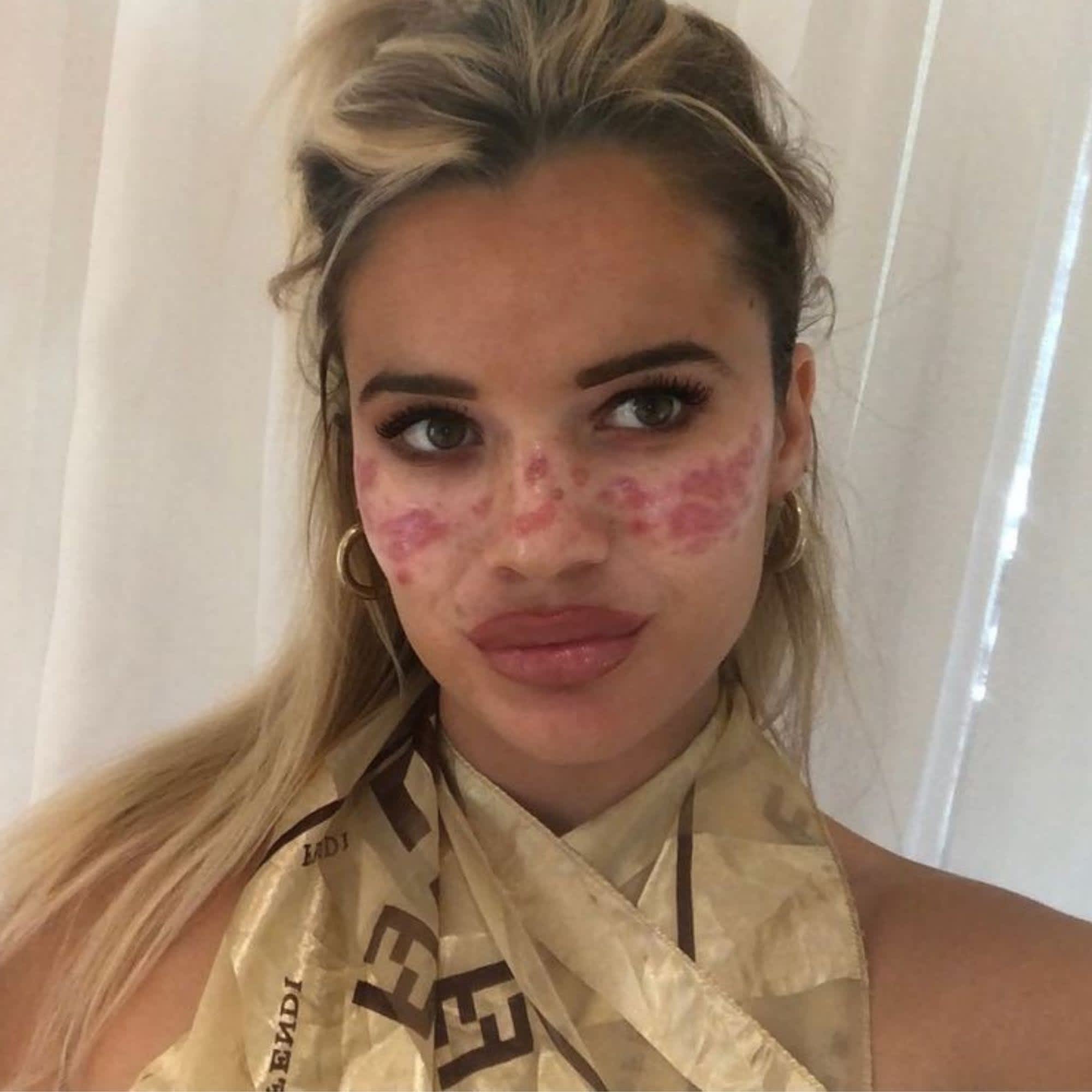
- POPSUGAR Australia
- Beauty
- How Beauty Trademarks Really Work
How Beauty Trademarks Really Work

If you’ve tuned into any aspect of the beauty industry lately, you’re likely aware that the latest celebrity beauty brand to hit the market – Hailey Bieber’s Rhode Skin – officially launched in June to much fanfare, almost immediately selling out of every product. Then, a week later came the news that the brand was being sued for trademark infringement.
The contemporary fashion brand Rhode released a statement on June 21, in addition to filing the lawsuit through its legal counsel, Lisa Simpson. It reads in part: “Today, we were forced to file a lawsuit against Hailey Bieber and her skin-care line that launched last week and that is using the brand ‘Rhode.’ We didn’t want to file this lawsuit, but we had to in order to protect our business.” (A representative for Rhode Skin did not respond to a request for comment.)
This isn’t the first time a big-name beauty brand has been met with similar legal proceedings – last year, Kim Kardashian’s company Skkn by Kim was also served a cease and desist order by the brand Skkn+ due to the similarity of the company names – but you may be wondering: what exactly does it mean to file a beauty trademark, and what recourse can you take if you feel your trademark is being infringed upon? We explore the ins and outs of the process below.
What Is a Trademark?
Though trademarks are often touted online as a surefire way to protect your business, the process for filing one can be complicated. “A trademark is the area of intellectual property used to protect your business and brand names, as well as logos and/or slogans. For a beauty brand or any brand for that matter, the process is determined by the type of application you elect to file,” associate attorney and business counsel Jordan B. Franklin, JD, tells POPSUGAR.
There are two types of applications that you can file: an “in use” application and an “intent to use” application. The former is a standard application that indicates your brand is already up and running; the latter is the one that celebrities typically file. “This application means that you are in the process of getting your affairs in order but have not officially launched and have no products available for consumer consumption,” Franklin says.
More important than the type of trademark filed is adhering to the process of properly filing said trademark when trying to secure your intellectual property.
What Is the Process For Trademarking a Brand Name?
After deciding which application to file, there are a few additional steps that will follow:
- Step 1: Search.
- With both applications, the first (and most important step) is searching for where the name is already being used, either by competitors or otherwise. For this step, Franklin highly recommends that a practitioner completes this on behalf of their client. “You want to be super thorough when searching the United States Patent and Trademark Office (USPTO) database, and couple that search with basic internet and social media searches,” Franklin says. “The search period will let you know whether your desired mark is something you can move forward with or whether you will have issues due to an existing mark. If the search is clear, preparing the filing of the application will be the next step.”
- Step 2: File.
- The next step in the process is selecting which filing classes you want to file the application under. There are 45 different filing classes, each numbered one through 45, that represent different types of goods and services. Cosmetics, beauty products, skincare, and hair care all fall under category number three. “This is the point in the process where the two different application types will differ,” Franklin says. “If you file a standard application, you will have to provide proof that your brand name, logo, and/or slogan is being used for the services or on the goods you are filing under. Examples of that proof of use can be a website where people can purchase your products, photos of the products’ packaging, etc. If you are filing an intent to use the application, you do not have to provide proof of use this early in the process.”
- Step 3: Submit.
- This part of the process is essentially just submitting your application and waiting for the results. “Once your application is submitted, the USPTO will assign it to an examining attorney,” Franklin says. “Right now, that timeframe to wait is around eight to nine months.”
- Step 4: Wait For Examination.
- Once your application is assigned, the examining attorney will conduct an examination of your application. “The attorney will conduct additional searches to see if there are any conflicts with existing registrations or prior-filed applications,” Franklin says. “They will also check your application itself for any filing mistakes. The time this takes varies and is completely at the discretion of the examining attorney. From there, however, if there are issues with your application, they will issue what is called an ‘office action.’ This email will lay out all the issues that you need to address.”
- Step 5: Opposition.
- The last part of the process is what is called the “opposition period.” For an “in use” application, this is the last step before registration is granted. For an “intent to use” application, this is the step before you are then required to prove your brand is up and running, after which registration would then follow. “The opposition period, I tell my clients, is the moment during the wedding where the officiant states, ‘If anyone objects to this union, speak now or forever hold your peace,'” Franklin says. “This is the point where anyone can object to your mark becoming registered, and they must articulate their reasons why.”
While there can be a host of reasons why someone would oppose your trademark, Franklin says that the most common reason she’s encountered is that someone feels your brand is too similar to theirs and will likely cause consumer confusion in the marketplace, as we’ve seen in the celebrity trademark suits.
The Difference Between a Lawsuit and Trademark Opposition
While they may sound similar, a lawsuit and trademark opposition are two different things. “When you hear someone is sued on the basis of trademark infringement, that takes place in federal court, which is outside of the USPTO,” Franklin says. “Within the USPTO, oppositions are heard before a board of judges called the Trademark Trial and Appeal Board (TTAB). The TTAB/USPTO will not hear or take lawsuits based on infringement, as those are saved specifically for federal courts in respective states. So essentially, a suit and an opposition are two different processes, filed in two different places, and heard by different governing bodies. You could do both processes at the same time.”
So what happens if you don’t oppose a trademark but feel your brand is being infringed upon? There are still options. “You only have 30 days to oppose a trademark,” Franklin says. “You can file extensions for a max of 90 days – 60 days without cause, 90 days require showing cause or why you need an extra extension and paying a fee. If you do not bring an opposition within the time allotted, you will have to wait until the trademark is registered, and then you could bring what’s called a cancellation proceeding. This is used in an attempt to cancel someone’s registration, which you can do as long as the mark is less than five years registered and, of course, you have a legitimate claim to do so.”
Can Trademark Infringement Occur Across Product Categories?
There has been some confusion about how a fashion brand could have grounds to sue a beauty brand, but it turns out that the “categories” of goods aren’t the only thing to be considered. “Even if the trademark is in a different class or category, you can still argue there could be confusion and potentially sue on those grounds,” Franklin says. “For there to be or potentially be a likelihood of confusion, the categories only need to be ‘related,’ not identical.”
In terms of Rhode Skin vs. Rhode the fashion brand, the similarities between the company names cause more of an issue than the fact that they are two different categories of goods. Where the names are identical, the law states, “The more similar the marks at issue, the less similar the goods and services need to be to support a finding of likelihood of confusion. If the marks of the respective parties are identical or virtually identical, the relationship between the goods and/or services need not be as close to support a finding of likelihood of confusion as would be required if there were differences between the marks.”
Why Trademark Disputes May Not Stop the Creation of a Brand
You may have heard of brands that are engaged in a trademark dispute and then both brands end up coexisting. Though the brand that filed the dispute may not have stopped the creation of the brand from existing altogether, there are typically still some agreements made to satiate both parties. “More often than not, these instances boil down to smaller brands not being able to keep up with legal costs that it takes to go through with the suit,” Franklin says. “The fight is up to the client, and if they feel they just cannot handle it financially, then that can be a huge determining factor of moving forward or not – no matter how strong a case they may know and feel they have.”
“As a brand owner, you have a duty to police and protect your branding. Your branding is the way your consumers draw a connection to not just who you are and what you do but to the quality and prestige of your brand as well.”
What can sometimes happen in these cases is that the brands settle. “A common way they do this is by agreeing to a ‘coexistence agreement,'” Franklin says. “What these do is not only state that the parties agree to coexist but also that each will do so in their respective corners. Terms like not expanding into other areas/products that could blur lines are often common for these agreements, as well as geographic restrictions on where the other brand can sell.” Essentially, these agreements are stating that as long as you don’t step on the original brand’s toes and interfere with what it’s doing or do something too close, then it’s fine to exist.
Though the results of this lawsuit remain unclear, if you are a brand owner and ever find yourself in a similar situation, know that you have options available to you. “As a brand owner, you have a duty to police and protect your branding,” Franklin says. “Your branding is the way your consumers draw a connection to not just who you are and what you do but to the quality and prestige of your brand as well. Protect your brand, fight for it, and don’t let anyone bully you over your property.”


